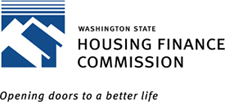- Homeownership
- Multifamily Housing
- Nonprofit Facilities
- Special Programs
- Property Managers
- For Investors
OCTOBER 2015 | DOWNLOAD PDF | CURRENT ISSUE | PAST ISSUES
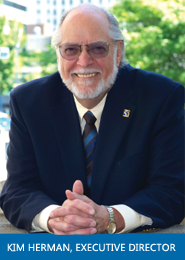
Washington Youth and Families Fund:
Public-private partnerships are driving innovations to make youth and
family homelessness rare, brief and one-time
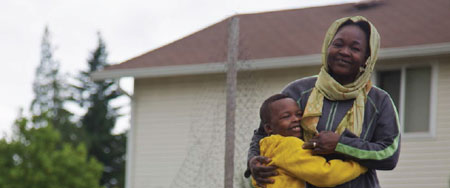
![]()
Building Changes: “We do the in-between work”
Family Homelessness: Two Divergent Directions
Neighborhood House: “Tons of success stories”
The ‘Lean Team’: Progressive Engagement in Grant County
Homeless youth and young adults: Meeting their specialized needs
Raikes Foundation: Providing leadership in addressing youth homelessness
"Our People are Your People": WYFF’s 2014 Memorandum of Understanding
Eleven years ago, an extraordinary partnership of people and organizations came together to help families transition out of homelessness. The Washington Families Fund (WFF) was established by our state legislature in 2004 as a way to leverage funding from both public allocations and private philanthropy to fund the range of services needed to make this a reality.
I wrote about WFF’s founding and early successes in My View’s August 2006 issue. Already a remarkable achievement then, this program continues to reinvent itself through continuous innovation. In 2014, WFF partners took on a new challenge and a new name: Washington Youth and Families Fund (WYFF). With this transition, the unique developmental needs of homeless youth and young adults are now a core part of the fund’s mandate. This issue looks at how WYFF has grown, what it is accomplishing, and its stakeholders’ ambitions for the future.
Building Changes: “We do the in-between work”
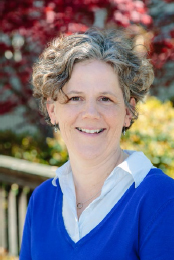
“Sound Families built in a culture of
exploring, learning, and greater risk-taking that was very new and fresh
in the homeless housing sector.”
Alice Shobe
Executive Director
Building Changes
Alice Shobe, Executive Director of Building Changes, is the ideal person to share the breadth of WYFF’s accomplishments since its launch. Building Changes is what Alice calls the “compassionate engineer” of WYFF. Officially the administrator of WYFF funding to hard-working homelessness programs, Building Changes is also an advocate, mentor, and research partner in the WYFF effort. The organization serves as facilitator, grant-maker, evaluator, and capacity builder in supporting all contributors in working together effectively. “We do the in-between work,” says Alice.
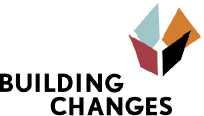 According to Alice, WYFF has funded innovative strategies carried out by
88 organizations in 21 Washington counties. Over the past 11 years, our
state has allocated $20 million to WYFF. That investment has leveraged
$38.75 million from 25 different private funders.
According to Alice, WYFF has funded innovative strategies carried out by
88 organizations in 21 Washington counties. Over the past 11 years, our
state has allocated $20 million to WYFF. That investment has leveraged
$38.75 million from 25 different private funders.
Alice previously served as director of the Bill and Melinda Gates Foundation’s Sound Families program for homeless families, which funded and built more than 1,400 homes for homeless families in King, Pierce, and Snohomish Counties. Sound Families’ homes provided the original, giant impetus for WFF’s launch in 2004; it was intended to support the programs and services for the newly housed families to help them transition away from homelessness and into the mainstream. Alice joined Building Changes as deputy director in 2008 and has led it since 2012.
“Sound Families built in a culture of exploring, learning, and greater risk-taking that was very new and fresh in the homeless housing sector,” Alice says. That approach and attitude has carried through to WYFF to this day. When advocates made their first ask to the legislature for funding WFF back in 2004, “we were armed with solid data and a bold idea.”
Since that time, WYFF has continued the emphasis on data. Helping end homelessness for families is always a compelling case, Alice says, “but having reasons and rationales, showing what we’re learning, how people’s lives are changing, and the next steps we’re going to take—plus very strong private support—it all gives the funding case that much more momentum.”
Replacing public programs has never been WYFF’s goal, she explains. WYFF can never raise enough money to house and support all the people targeted by its programs. “WYFF has always has been about incubating new knowledge, trying new things, and then bringing the learning back into the larger system so that it can scale,” Alice says. “And when you combine public and private money you’re also bringing in the greater risk tolerance of the private sector.”
Family Homelessness: Two Divergent Directions
Early realizations, defining needs
The data from Sound Families revealed a relatively stark delineation between two “types” of homeless families. About 80 percent of these families are homeless once, for a relatively short time period. They ultimately were termed “Moderate-Needs” families.
“But we also could see that about 20 percent of the families were leaving programs early and returning to homelessness,” says Alice. “A less understood and complex group of people was emerging.” No matter where in the state homeless programs operated, they weren’t working for these 20 percent of families, who typically faced multiple obstacles to stability, such as a history of homelessness, past experiences of abuse and trauma, and ongoing substance abuse, mental health, and medical problems.
“If people are facing economic issues, let us help dig in and figure out
how to help get them onto a job path and how to increase their income in addition to finding housing they can afford.”
ALICE SHOBE, Executive
Director, Building Changes
For WYFF and Building Changes, this realization was the seed of a major effort to figure out what that 20 percent needed—what types of services might make a difference. Led by Building Changes, a dozen agencies from around the state met over a six-month period to come up with answers. By 2007, the High-Needs service model had been developed, which includes permanent supportive housing for these families.
OUTCOMES OF HIGH-NEEDS STRATEGIES
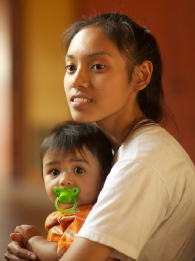 In 2014, preliminary findings of the High Needs Family evaluation showed
the following for 143 families who stayed in the program for at least 12
months:
In 2014, preliminary findings of the High Needs Family evaluation showed
the following for 143 families who stayed in the program for at least 12
months:
At Entry Into Housing
3.3 moves (in 6 months prior)
12% employed
Average income $549
18% Child separation involving CPS
12 Months Following
0.8 moves (in 12 months)
25% employed
Average income $693
6% Child separation involving CPS
The High-Needs Family model
Meeting the multiple challenges of high-needs families has continued to be a major focus of WYFF. Since its inception, 13 organizations across the state, from Forks to Spokane to Vancouver, have worked with families through the High-Needs Family (HNF) program. Of these families, those who stay in housing for at least one year have shown significant improvements in measures including family reunification, employment, income, and access to health care—along with reduced substance abuse and sexual/physical abuse and lower rates of criminal-justice involvement.
In 2008, Building Changes hired the research organization Westat to begin an evaluation of the HNF service model. That evaluation is ongoing, and continues to generate important information about family characteristics and outcomes.
In 2009, the Robert Woods Johnson Foundation stepped in to support a longitudinal study by Westat of the effectiveness of permanent supportive housing under the HNF program. This study is comparing WYFF’s HNF program participants with a separate set of families with similar characteristics. The goal is to generate conclusive insights into the approaches that will best serve and stabilize these families over the long term.
During 2015, HNF study researchers have been releasing complete findings in areas including physical health, behavioral health, child welfare, education, and a cost analysis of the model. They’re also engaging with HNF grantees across the state to gather insights and hear more individual stories about families. This fall, the next step will be an effort to uncover whether different types of families experience more positive outcomes—and why.
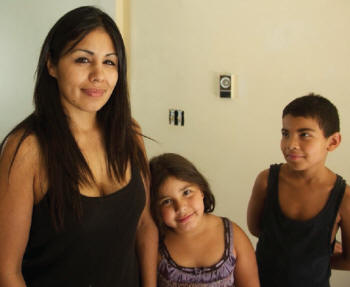 Moderate-Needs Families
Moderate-Needs Families
The initial Moderate-Needs model funded services in transitional housing, which allows families a stay of up to two years, during which they receive case management training in life skills such as budget management and parenting.
As their thinking has evolved over time, Building Changes has shifted WYFF’s service model and grant-making emphasis for Moderate-Needs families, walking with them down very different paths.
In 2007, this model was expanded to emphasize employment opportunities. A majority of the families in these programs have been able to transition into stable housing after about 11 months, on average.
For many of these families, it’s become increasingly clear that a brief intervention targeted to a family’s unique circumstances can often jump-start them out of homelessness—or prevent it from occurring. “Not every family needs intensive transitional housing or steeply subsidized housing. They may just need shorter-term interventions,” Alice explains.
Understanding the employment and income needs of Moderate-Needs families
Rapid re-housing and diversion are among the most successful homelessness strategies that have emerged and evolved in the U.S. over the last several decades. They’ve had a profound impact on WYFF’s grant-making for Moderate-Needs families since 2009. The point of both strategies is to help get families back on their feet quickly and secure what they need to maintain stability. The potential solutions vary, but they all take advantage of families’ unique strengths and resources.
First, some definitions:
Rapid Re-Housing utilizes a community’s coordinated entry system to ensure that all service providers work in concert to help families exit homelessness into permanent, market-rate homes. This strategy integrates three components: employment assistance, case management, and housing services.
National statistics indicate that with this approach, 91% of families successfully move into permanent housing and take over their own rent after receiving rental assistance from five to six months. And it’s more cost-effective than shelters or transitional housing.
Diversion is based on the premise that not everyone needs rapid re-housing. Families are given the option to choose this approach. Diversion is a flexible, creative intervention that engages families as early as possible to either resolve homelessness—or prevent them from experiencing it.
Under the diversion model, caseworkers work with families to identify how to most effectively maintain or regain stable housing. The solutions vary from family to family, depending on the unique skills and situations of each. Interventions might include conflict resolution with family or landlords, a bus pass, a utility payment, legal services, referrals for help with jobs or childcare, or first and last rent.
Progressive Engagement (PE) is an approach that complements diversion and rapid re-housing. PE begins with a small amount of assistance, as caseworkers and families problem-solve to quickly resolve immediate crises. Sometimes a small but highly focused and well-timed intervention can make all the difference for families.
OUTCOMES OF MODERATE-NEEDS STRATEGIES
In King County, WYFF funded several pilots of the diversion and
rapid re-housing strategies. Preliminary findings include:
Rapid Re-Housing
» More than 60% of families moved into permanent housing within three
months of enrollment.
» Of those families, 87% maintained permanent housing at program exit.
Diversion
» Of families referred to diversion, 229 families (62%) were
successfully housed, with a median of 40 days.
» Of those families, 67% were renting their own place without ongoing
subsidy.
» The average financial assistance per family is $1,259—most commonly
for expenses such as transportation, rental assistance and security
deposits.
» King County and the City of Seattle have both realigned funding to
support diversion as a core service of the homeless response moving
forward.
» Everyone in King County who calls for homeless services is now offered
diversion as an option.
Employment Strategies
Since 2009, WYFF has been able to take advantage of a tremendous amount of research into best practices like these and others to end family homelessness, supported by a $60 million, 10-year initiative undertaken by the Bill and Melinda Gates Foundation. This project identified ‘five pillars’ that are helping communities across the U.S. reduce family homelessness. I’ve already introduced most of these: prevention, coordinated entry, rapid rehousing and diversion, programs tailored to families’ needs, and better strategies to increase income and employment.
WYFF’s first significant innovation was in encouraging homeless programs to explicitly link employment with housing. “Ten years ago,” Alice says, “people working in the homeless housing sector were not talking about jobs. We weren’t looking at the income side of strategies to end homelessness.” WYFF’s first early work, led by Building Changes, was to consider “if people are facing economic issues, let us help dig in and figure out how to help get them onto a job path and how to increase their income in addition to finding housing they can afford.”
The commitment from Gates has helped to “super charge” innovative research models like Housing and Employment Navigator. Since 2010, successive iterations of this model have received some funding from WYFF, but are also underwritten through Gates and other sources. Utilizing a cross-systems approach, this model integrates the work of housing caseworkers supported by WYFF with those of the larger community—and, in fact, is a great example of addressing all five pillars mentioned above.
The Navigator programs have enlisted many community partners, including the Washington State Department of Social and Health Services (DSHS) and WorkForce Central. WorkForce Central, for example, won a 2012 $6 million Workforce Innovation Grant from the U.S. Department of Labor with the aim of establishing best practices in the design and delivery of this model. This research, begun in 2013, is engaging 360 homeless families in Pierce, Skagit, Whatcom, and Yakima Counties.
Neighborhood House: “Tons of success stories”
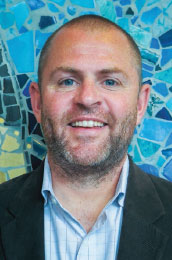
“We’re able to be successful because we
have funders who aren’t dictating how things have to be done."
Tanner Phillips
Senior Housing Stability Manager
Neighborhood House
Tanner Phillips is a Senior Housing Stability Manager at Seattle-based Neighborhood House, which has received four WYFF Systems Innovation Grants (SIGs) since 2011. The three most recent grants are focused on rapid re-housing and diversion; one is a Rapid Re-Housing Employment Navigator grant. To date, Neighborhood House has worked with more than 250 families with help from WYFF funding. “We have tons of success stories,” Tanner says.
 “The approach that we take with this work is that homelessness is
inseparably connected with employment—with financial empowerment. And we
strive to have a coaching approach to progressive engagement, which
basically means that we meet people where they are.” He gives the
example of diversion. “It’s a bit like homelessness judo: It redirects
energy, helping people recognize solutions that they already have—and
mediating conflicts. At times that may mean paying for rent to move a
family into an apartment, but it’s not paying ongoing rent.”
“The approach that we take with this work is that homelessness is
inseparably connected with employment—with financial empowerment. And we
strive to have a coaching approach to progressive engagement, which
basically means that we meet people where they are.” He gives the
example of diversion. “It’s a bit like homelessness judo: It redirects
energy, helping people recognize solutions that they already have—and
mediating conflicts. At times that may mean paying for rent to move a
family into an apartment, but it’s not paying ongoing rent.”
Tanner says these programs offer a community of support that can help families focus on their employment, financial, and housing planning, all from the get-go. “The very rapid part of rapid re-housing is not just rapid into housing, it’s also rapid in terms of being able to take over your own rent,” he says.
Rapid re-housing is designed to take place within a six-month timeframe. But with employment a part of the process from the very beginning, “we’re seeing that families are able to take over their own rent, on average, in three or four months.”
“Diversion is a bit like homelessness judo: It redirects energy, helping
people recognize solutions that they already have.
TANNER PHILLIPS, Senior Housing
Stability Manager, Neighborhood House
Tanner appreciates the flexibility the WYFF grants allow to enable caseworkers and families to address rapid re-housing and diversion in a myriad of different ways. One example he gives is the role that training can play. “Homeless families need to generate income right away. But people also need to improve their skills right away so they can generate more income and achieve greater stability long term,” he says. “Part of the rapid re-housing process may involve identifying short-term trainings—like forklift operator or flagger—that last a week or a month, which some of our clients are able to access.”
FROM THE SHELTER DIVERSION PROGRAM TO
EMPLOYMENT AT NEIGHBORHOOD HOUSE:
Jean-Paul Yafali’s story
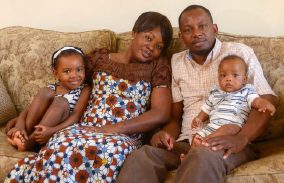 When Jean-Paul Yafali sought housing help for his homeless family in
mid-2014, he brought with him his generous and indomitable spirit.
When Jean-Paul Yafali sought housing help for his homeless family in
mid-2014, he brought with him his generous and indomitable spirit.
Jean-Paul moved to the U.S. seeking political asylum from his homeland,
the Congo, in 2012. He had left a job teaching at a university in
Kinshasa, leaving his family behind temporarily until he could get
settled in Seattle.
“The beginning was really hard,” he says. “I could not find work. I had
to go through a long immigration process, hiring a lawyer. I spent all
my savings. I didn’t know anyone. And ended up on the streets.”
But Jean-Paul didn’t lose hope. “I told myself, Let me just be
strong: I know who I am. I was homeless, but I was giving back to the
community.” Jean-Paul dove into volunteering in Seattle. He taught
computer skills, tutored ESL classes, prepared taxes, and shared a host
of other skills through organizations including Seattle Goodwill and
the United Way of King County. “No one knew I was homeless at that
time,” he says.
Finally, in 2014, Jean-Paul secured a job teaching French; with his
earnings, he arranged to bring his wife and daughter to the U.S. that
summer. The process happened in a week—far more quickly than he had
anticipated—“and I didn’t have any way to house them.” They started out
sleeping in his car, before he was able to secure temporary shelter for
his wife and daughter.
His many setbacks over the previous two years had worn Jean-Paul
down—and left him wondering where he could turn for help. But he tried
calling 211, and was ultimately referred to Melissa Espinoza at
Neighborhood House.
Saying yes
Melissa is a case manager who works with families through the
WYFF-funded Family Housing Connection Shelter Diversion (FHCSD) program.
“Melissa was amazing,” Jean-Paul recalls. “She just kept pushing and
pushing. Within a week, she was able to find us a home without my having
any rental history. The following week she got a job for me. It was a
good-paying job. She asked me, ‘Are you open to getting a survival job?’
And I said: Yes I am.
“She’d say ‘OK, do you have time to attend this workshop?’ And I’d say,
yes.”
“The diversion pilot program has been wonderful,” Melissa says. “It’s
very open in terms of the flexibility it offers.” When the program was
launched, the hope was that about 30 percent of households would
successfully be “diverted” into permanent stability without requiring
the intermediate step of rapid re-housing or transitional housing.
Instead, she says, closer to 60 percent have been diverted.
Melissa typically enrolls 22 to 30 families per month in the FHCSD
program. That’s a lot of families. But one year after Jean-Paul had
secured his job and taken on the rent of his family’s two-bedroom
apartment on his own, Melissa still remembered him.
“When an opening for a case manager came up at Neighborhood House, I
wanted him to work with us,” she says. “I had seen how, even while in
the midst of being homeless, he was still giving back to the community.
I said: ‘You need to apply for this job. I need to work alongside you,
because together, I can imagine what we can do.’”
Jean-Paul won the job—and started work as an Employment Navigator in
August 2015. “I just want to be like Melissa,” he says. “I think I’ll
need five years to become as outstanding a case manager as she is.”
From there, they may also establish a plan and a connection to community colleges, “so as people take over a survival or a stepping-stone job after a month or two, and are able to take over their rent, they’re also taking those steps towards additional training six months into their current job.”
What his team is now seeing, he says, is that as families approach the nine-month mark, there can be a drop-off in income, or their housing situation may change. “There’s a lot of movement—and it’s because they’re in a position to take the next step. They may move into a cheaper apartment that’s a better option for their budget based on the financial counseling they’ve been receiving. They’ve entered job training and are able to balance their income with their training.”
Tanner says the team approach supported by WYFF’s grant-making “allows people to find and drive their own solutions. Often we see that people want to focus on their job plan before they even move into housing: They want that stability and that security, even if that means staying in a temporary housing situation.” The number of days it takes to move into housing is often sped up by the fact that people are able to focus on their job search and find work.
“This has a lot to do with landlord relationships as well,” he says. “Landlords, when they see that people are looking for work or have found work, are much more willing to offer units to programs like ours.” He emphasizes that building relationships is fundamental to these programs. The landlords they work with, for example, often reach out to let his team know when units become available.
Testing ideas in the community: A cornerstone of WYFF grant-making
Learning Circles are an integral part of every WYFF grant. These typically meet monthly, and include WYFF staffers, service providers across the system, each agency’s leadership, and direct service staff for the grant under exploration, as well as other funders. “Everyone sits at the same table and talks about what they’re seeing. It’s the stories as well as the numbers,” Tanner says. He points out that the data play a critical role in helping his team remain “flexible and nimble and responsive” with clients, adjusting solutions as they learn what’s working—and what isn’t.
“We’re able to be successful,” he says, “because we have funders who aren’t dictating how things have to be done. They simply want to be part of a constructive conversation about how the work can be done best—and how funding can be best spent. It’s a very collaborative, holistic process. Having all the different voices at the table helps us make sure that the work is getting done right.”
Mei Ling Ellis is Building Changes’ Director in charge of Measurement, Learning, and Evaluation. She joined Building Changes about two years ago, specifically to help drive these priorities. Mei Ling has an extensive background on both the clinical side of working with families and youth, and in evaluation and research. “What drew me to this role was the opportunity to work at a systems level, the direct application of what we’re learning being put into practice—and because this work ultimately impacts families,” she says. Testing new ideas, Mei Ling emphasizes, is a cornerstone of WYFF grant-making.
“The objective is to try out innovative ideas, strengthening what we think is working, learning more about these practices.” She calls this process continuous learning loops. “Having that flexibility to test ideas and learn from them is an amazing opportunity. It’s weighty as well. We have the responsibility to make smart decisions that will benefit families and youth in our state.”
Building connections—and sustainability
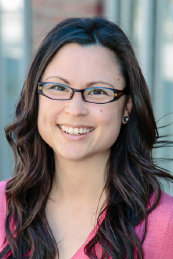
"WYFF has an incredible record of applying
integrated models and creating successful partnerships.”
Mei Ling Ellis
Director in charge of Measurement, Learning, and Evaluation
Building Changes
Mei Ling gives the example of WYFF’s King County Rapid Re-Housing Employment Navigator grants. Areas of inquiry range from the impact of the program on individual families, all the way up to systems-level questions. “We’re interested in understanding what types of connections service providers are making and encouraging them to build connections with other agencies. When we find a promising practice that we think is working well, we ask: How is that going to work once the grant ends? How is it sustainable? That’s incredibly important. The sustainability is not just the money, it’s also who do we involve in a partner network at the systems level? In the end, the partnerships are so very important.”
In fact, she emphasizes, questions about the sustainability of successful programs and practices are a key part of Learning Circles from the get-go. The team makes adjustments along the way. The goal is to help inform practical applications of promising practices—and adding to the collective knowledge of the field.
With the Employment Navigator, which has been underway for less than two years, the outlook thus far is extremely promising. “What we’re seeing from the data and hearing from the providers in Learning Circles is that the majority of the families in the Employment Navigator are employed.”
Disproportionality and disparity: A critical line of inquiry
Mei Ling brings up another fundamental principle that drives WYFF grant-making: racial equity.
Point of fact: Families of color are overrepresented in homeless populations both in Washington State and nationally. “We want to work towards addressing and reducing racial disproportionality and disparities,” Mei Ling says. One way they accomplish this, she explains, is by evaluating outcomes in terms of race—which families a program appears to work for, and those for whom it doesn’t.
WYFF grant-makers take this several steps further, for example, in working to bring as many diverse organizations as possible to the table during the RFP process.
Finally, Mei Ling emphasizes that successful models will vary from community to community. “When we arrive at a model that works really well, it might look a little different in other communities because people and organizations have different access to resources,” she explains. “Our objective is to determine what core elements are needed to do it well and what system connections and partnerships need to be established to maintain a successful program.”
The ‘Lean Team’: Progressive Engagement in Grant County
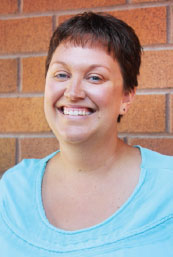
"We are spending much less on each family
than if we were continuing to assist with housing costs.”
Steffanie Bonwell
Homeless Programs Manager
Housing Authority of Grant County
The potential to learn more about addressing disproportionality was one of many compelling reasons why the Housing Authority of Grant County (HAGC) was awarded a three-year grant—the Grant County Homeless Family Self-Sufficiency Project—from WYFF in October 2014. WYFF grant-makers were interested in the Authority’s ability to reach families of color, migrant farmworker families, and those who don’t speak English as a primary language, all of whom are disproportionately impacted by homelessness.
The HAGC grant is officially described as providing “case management, flexible cash assistance for housing/work-related expenses, and incentivized financial planning.” The targeted families are those who have already completed the county’s Rapid-Re-Housing program. Its ultimate goal, says HAGC Homeless Programs Manager Steffanie Bonwell, “is to help families stay stably housed.”
Grant County sits in the middle of the state; fruit and crop farming take up a large share of its economy. HAGC is virtually the only provider of homeless services in the county, and in many ways, Steffanie says, they are fortunate: “We’ve never had to turn away a family who qualified for rapid re-housing because of a lack of funding.” A huge help are the local document-recording fee dollars targeted to the homeless that are funneled through the State Department of Commerce. In 2014, for example, HAGC assisted 69 families with rapid re-housing services and found that many families achieve self-sufficiency once the short-term rental assistance is completed.
By contrast, the WYFF grant was specifically tailored to the needs of the families who don’t achieve self-sufficiency. Steffanie says she applied for the WYFF grant to gain “the ability to think outside the box and to help families in ways we’ve never been able to before—that there isn’t assistance for in Grant County.”
Steffanie and her team are making use of the WYFF funding to support families to keep their jobs and improve their employment situations—even helping with resumes, interview clothing and GED classes. In the case of a farmworker family currently in the program, the program will help underwrite ESL and citizenship classes to help stabilize their living situation. HAGC collaborates across systems, working with local domestic violence, chemical dependency, and mental health agencies.
Thus far, through the grant from WYFF, Steffanie and her team have worked with five families at a very low cost: an average of about $600 per family, including case management. “We have found that we are spending much less on each family than if we were continuing to assist with housing costs,” she says. In fact, the team at Building Changes has taken to calling Steffanie and her staff of three ‘the Lean Team,’ in honor of their ability to accomplish so much within a compact budget.
Homeless Youth and Young Adults: Meeting their specialized needs
During the past year, several great things have happened in our state that are carrying forward solutions for preventing and ending homelessness among youth and young adults.
"We have an adult homeless system and a family homeless system—and youth
and young adults don’t fit into either.”
ALICE SHOBE, Executive
Director, Building Changes
 The addition of youth to the fund’s title and efforts last fall was
driven by a “growing understanding that we have an adult homeless system
and a family homeless system—and youth and young adults don’t fit into
either,” Alice observes. “Their needs are very specialized.”
The addition of youth to the fund’s title and efforts last fall was
driven by a “growing understanding that we have an adult homeless system
and a family homeless system—and youth and young adults don’t fit into
either,” Alice observes. “Their needs are very specialized.”
This past spring, in recognition of the current shortfall of coordinated systems, practices, and funding to meet youth needs, our state legislature passed the Homeless Youth Act, making a statewide commitment to reducing and preventing youth homelessness. As part of this Act, the Office of Homeless Youth Programs (OHYP) was established by the legislature to coordinate funding, policies and practices at a state level, and youth and young adults were added to WYFF’s eligible populations. The legislature also allocated $3 million in new funding to WYFF.
Also during the past year, Building Changes convened an Advisory Committee made up of a broad representation of youth providers and youth participants from 13 Washington counties to help guide WYFF’s youth funding strategy. “We said: ‘Help us make up the next step. Let’s figure this out together,’” Alice recounts. A key takeaway from the committee’s input was that the youth homeless system needed to make better cross-systems connections—and build partnerships—particularly in the arenas of education and employment services.
Armed with this knowledge, Building Changes opened up its first WYFF RFP for up to $2.4 million. Its aim: to encourage organizations to innovate best practices to help unaccompanied, homeless young adults engage with mainstream employment and education systems. Eligible agencies and organizations included nonprofits, local tribes, housing authorities, and community-based organizations all over the state. The awards will be announced in early 2016. A testament to the need: Some 50 applications were submitted for this WYFF service grant.
A new legislative champion for our homeless youth
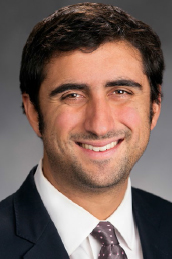
"WYFF has an incredible record of applying
integrated models and creating successful partnerships.”
Brady Walkinshaw
Representative
Washington State Legislature
In the two years since he joined the Washington State Legislature, Rep. Brady Walkinshaw has been a powerful champion for homeless youth and young adults. He was a leader in the effort to win the new $3 million allocation to WYFF in a challenging budget year and, alongside Governor Inslee, First Lady Trudi Inslee, and others, in establishing our state’s Office of Homeless Youth Programs. Brady’s Seattle district includes parts of central and downtown Seattle as well as Capitol Hill and the University District.
“It’s estimated that about 32,000 youth have experienced homelessness over the course of the year in Washington State alone,” he says. “And in King County, we have 750 youth who are experiencing homelessness every day. Kids with no place to sleep tonight.”
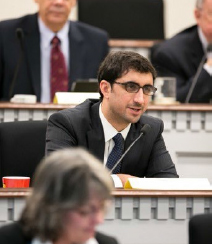 The legislature’s—and WYFF’s—focus on youth homelessness has been aided
by new data that has emerged in recent years, Brady explains,
underwritten by family foundations in the Seattle area, notably the Jeff
and Tricia Raikes Foundation. He summarizes some key understandings from
the research: “If a child or young person experiences homelessness for a
brief, one-time period, the likelihood that it will happen again in the
future is vastly reduced. But if they start to bounce in and out of the
foster care system and homelessness, experiencing it multiple times,
they’re much more likely to experience homelessness as an adult.
The legislature’s—and WYFF’s—focus on youth homelessness has been aided
by new data that has emerged in recent years, Brady explains,
underwritten by family foundations in the Seattle area, notably the Jeff
and Tricia Raikes Foundation. He summarizes some key understandings from
the research: “If a child or young person experiences homelessness for a
brief, one-time period, the likelihood that it will happen again in the
future is vastly reduced. But if they start to bounce in and out of the
foster care system and homelessness, experiencing it multiple times,
they’re much more likely to experience homelessness as an adult.
“Housing stability is fundamental, and investing in prevention has such high returns,” Brady says. “So breaking that cycle of homelessness, and creating strong pathways to housing stability, are essential for long-term economic, educational and life success, positive health indicators, and less likelihood of chemical dependency for our youth. It’s been an exciting step to expand WYFF to include youth, acknowledging that these are all interconnected issues. WYFF has an incredible record of applying integrated models and creating successful partnerships.”
As a gay man, Brady has another reason to take a particular interest in homelessness issues: the fact that LGBTQ youth are vastly overrepresented among the youth homeless population. He points to recent estimates that 20-40 percent of homeless youth identify as LGBTQ, even though they make up just 5-10 percent of the overall U.S. youth population.1 The data also indicate that racial minorities are overrepresented in the youth homelessness population.
For that reason, WYFF’s first grant for youth specifically encouraged applicants to address this disproportionality, stating that “we are especially interested in receiving responses from organizations that serve young people of color and LGBTQ youth.”
How tough was it to win $3 million for WYFF’s programs in this year’s legislative session? “Like any issue, in an environment with limited resources, you absolutely, absolutely have to make the case,” Brady says. “You do have to fight for it. But I hope that increasingly in public policy, especially when we look at the safety net for youth, we’ll continue to look at the data, which make the long-term payoffs from transforming kids’ and families’ lives very clear.”
THE RAIKES FOUNDATION:
Providing leadership in addressing youth
homelessness
 "Truly,
the whole house is on fire—the demand is great.”
"Truly,
the whole house is on fire—the demand is great.”
Katie Hong
Director of Youth Homelessness Strategy
The Raikes Foundation
Katie Hong, who is currently Director of Youth Homelessness Strategy at
the Raikes Foundation, has devoted enormous leadership to the fight to
end homelessness. In 2003, while serving as director of the City of
Seattle Office of Housing, she was one of a core group who brainstormed
WYFF into being. She was later involved with WYFF on the private funder
side as acting director of Pacific Northwest Giving for the Gates
Foundation.
I asked Katie for her insights into what the Raikes Foundation, in
collaboration with partners here in King County and Washington State, is
learning about youth homelessness. In 2014, the Raikes Foundation became
a signatory to the new WYFF Memorandum of Understanding (MOU). At the
Raikes Foundation, Katie says, “we’re singularly focused on helping to
improve the lives of youths and young adults in our community, so that
they can grow up and become these amazing, capable, fantastic, great
citizens.”
Katie first worked with the Raikes Foundation in 2011 as a consultant to
help answer some basic questions about youth homelessness. One of these
was, she says, “If the foundation wanted to be involved, what should we
be doing?”
The broadest answer was “anything.” What Katie found was that “there are
huge homeless youth needs spanning the entire continuum, everything from
outreach, to shelter, to housing, to education, to employment. Truly,
the whole house is on fire. You could contribute anywhere and feel
pretty good—the demand is that great.”
But some of the biggest gaps coalesced around three different areas, she
says: “We weren’t doing anything around prevention as a community; we
were program rich but systems poor; and we needed to do more on data
improvement and coordination.”
Raikes has made a commitment to provide leadership in a number of
critical areas, including supporting continuous learning about needs and
solutions. Here is a quick summary of some of their findings—and areas
of investigation—thus far.
» As with family homelessness, solving youth homelessness must engage
more than the work of service providers.
» This entails working within the crisis-response system, as well as
engaging with other systems including child welfare, juvenile justice,
and schools. In the case of schools, a spectrum of interventions is
needed.
» As with WYFF’s findings on family homelessness, youth homelessness has
different typologies. One “type” are those who “are homeless for very
short periods of time, who are still very much connected to family or
with other caring adults in their life. Other youth and young adults who
have more strained relationships with their families likely need a
different intervention model.”
Adds Katie, “We feel strongly that the role that we’ve been playing at
Raikes is at the systems level—to get our community to think about youth
homelessness. At both the national and at statewide levels, we’ve been
part of discussions around how we can share what we’re learning with one
other. We were very excited to sign on to the WYFF MOU. We strongly
believe that this is a vehicle for sharing what we’re all learning.”
“Our People Are Your People”: Washington Youth and Families Fund’s 2014 Memorandum of Understanding
We have, by one measure, achieved a 35% reduction in family homelessness
in Washington State.2
—Washington Youth & Families Fund Memorandum of Understanding, 2014
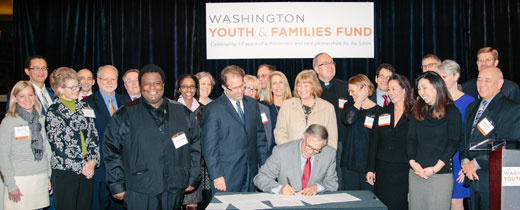
Joined by public and private sector partners, Governor Jay Inslee signed WYFF's new Memorandum of Understanding in December 2014.
Something Alice is known to say frequently is “Our people are your people.”
She explains: “Often, when you go to another system—say, employment—and say, ‘I’d like you to care about homelessness,’ they’ll shut down and reply, ‘No thank you—worrying about homelessness isn’t part of our job.’ But if you have data and you say, ‘Look, this is who we’re serving, this is what their incomes and profiles are and what their housing needs are,’ it’s a different conversation. They’ll look at the data and realize, ‘these are the people we’re trying to serve.’”
The key to building constructive change, she emphasizes, “is having data, and building understanding and insight—and making those connections.” This ‘bridging’ is not just bringing together public and private money, it’s people, organizations, knowledge—and the work itself.
For example, since WYFF’s founding 11 years ago, our state has experienced a significant shift in how mainstream systems like housing authorities, workforce development, schools, and healthcare organizations are working together to create housing stability for homeless families.
Alice points to WYFF’s collaborations with DSHS and Commerce as an aspect of WYFF “that often gets under-shadowed. We work closely with them, to try to understand and learn—and expand and grow what works.”
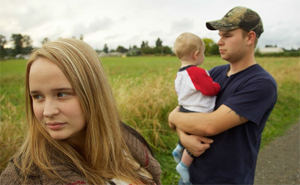 She particularly points to Commerce as WYFF’s lead agency. “We have
ongoing data conversations with Commerce—there’s a lot of back and forth
on how to take what we’re learning about diversion and rapid re-housing
and get it to more people in the state,” she says. “Commerce Deputy
Director Dan McConnon has been a key partner in this work, as have so
many others.” She also brings up the large percentage of homeless
families who are on TANF. Working with local DSHS offices to target
families that are on TANF and homeless has been part of WYFF’s rapid
re-housing strategy, she says.
She particularly points to Commerce as WYFF’s lead agency. “We have
ongoing data conversations with Commerce—there’s a lot of back and forth
on how to take what we’re learning about diversion and rapid re-housing
and get it to more people in the state,” she says. “Commerce Deputy
Director Dan McConnon has been a key partner in this work, as have so
many others.” She also brings up the large percentage of homeless
families who are on TANF. Working with local DSHS offices to target
families that are on TANF and homeless has been part of WYFF’s rapid
re-housing strategy, she says.
As WYFF innovates and evolves, as it builds on and bridges knowledge generated by partners both within and outside the state, and as a widening circle of people and organizations join this effort, the successes of seeing homeless families stably housed continue to mount. The great outcomes, shared knowledge, and shared efforts are what truly matter. Our people are your people becomes, simply.... Our people.
Last fall, WYFF celebrated its 10-year anniversary with a new Memorandum of Understanding (MOU) with the stated goal of, among other objectives, making youth, young adult and family homelessness in Washington State a rare, brief, and one-time occurrence by the year 2020. Signatories included a host of elected officials, and leaders of private foundations and public organizations, including Governor Inslee and David Bley, Pacific Northwest Initiative Director of the Bill & Melinda Gates Foundation.
I ask Alice if the MOU’s goals are achievable. She answers, “Yes. We’ve got good people from multiple systems working together on shared goals. We’ve got better ways to define our progress to address homelessness, and more people using data to make decisions and determine next steps.”
Given Alice’s positive response and WYFF's commitment to finding better ways to serve homeless families and youth, I would bet she is right!
1 Lurie, K. et al. (2015).
Discrimination at the Margins: The Intersectionality of Homelessness &
Other Marginalized Groups. Seattle, WA: Seattle University School of
Law.
2 Family homelessness was reduced by 35% between 2006
and 2014, according to the annual point-in-time counts as reported to
the Washington State Department of Commerce.
